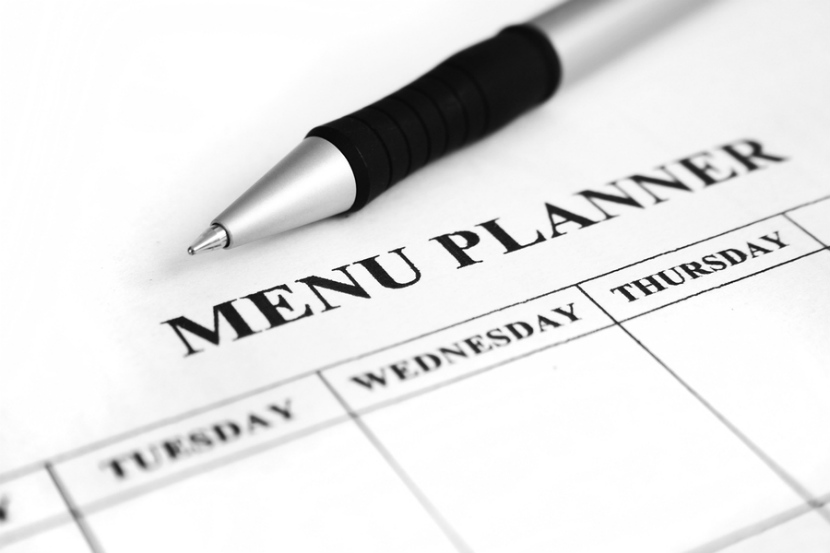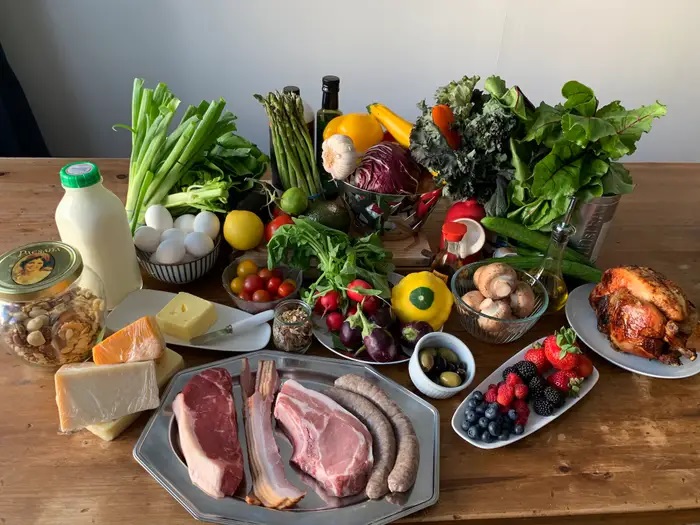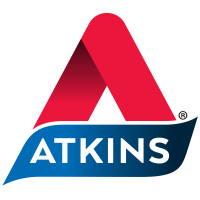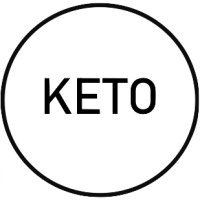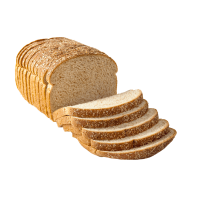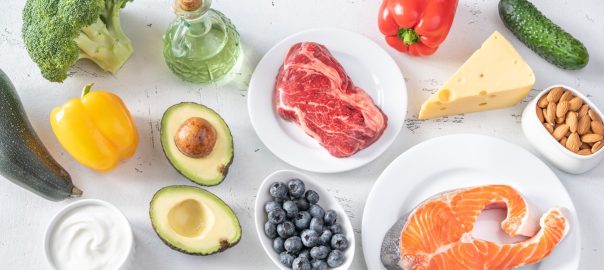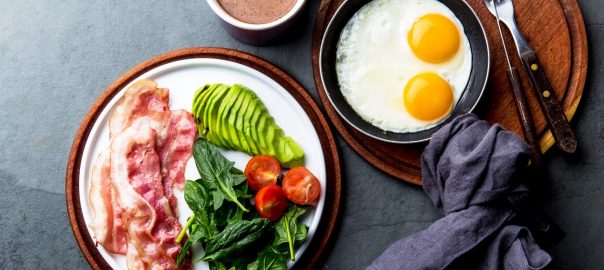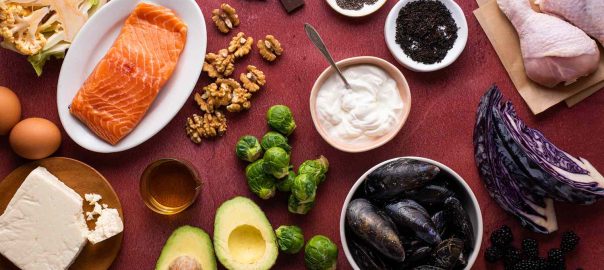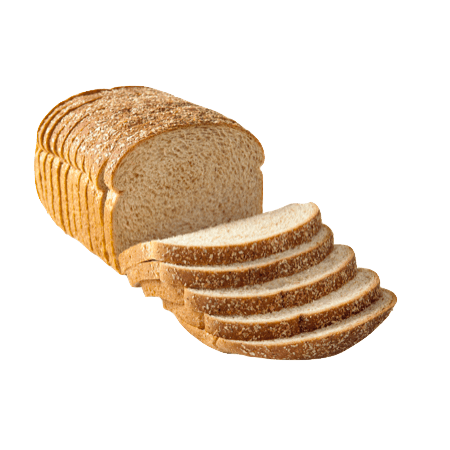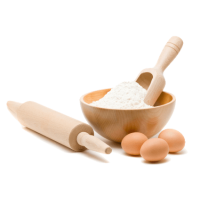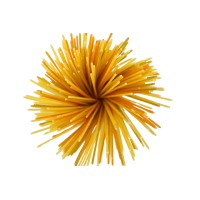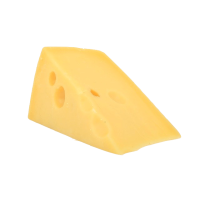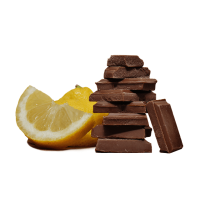30-Day Shopping & Meal Plan Guide
Creating Practical Low Carb Grocery Lists
Making healthy choices in nutrition each day is much easier if you’re surrounded by the foods that best support your low carb lifestyle. This means keeping your fridge and cupboards stocked with the ingredients and products you need to make healthy low carb meals and snacks each day, so creating a well-planned shopping list is very beneficial.
When your daily schedule is filled with commitments for work, school, and family, it can be a real challenge to make sure that there’s always a healthy meal on the table. A big part of the frustration that we often feel related to meals comes from not having a plan in place and trying to come up with ideas on the fly when it’s time to start cooking. Fortunately, a little planning can go a long way in keeping your low carb lifestyle on track, saving time, and ensuring everyone is happy, healthy, and satisfied.
Many people find that creating a 7-day weekly meal plan is very helpful. Having your meals planned out for the week reduces stress, saves time, save money, and helps you ensure that your nutrition goals are always met. It also helps to make your grocery shopping trips a little easier, since you’ll have a better idea of what foods and ingredients you’ll need to prepare each meal that week. Expanding your weekly meal plan process to encompass a full 30-days and take the guesswork out of food preparation for an entire month can make these benefits even more significant.
Now, we know that the idea of planning 30 days of healthy low carb meals might seem like a huge task. However, there are lots of tricks and smart strategies you can use to get it done fast, and done right. Let’s talk about some simple tips you can use to build out a great low carb meal plan that won’t break the bank, stress you out, or take up all your time.
Tips for Keeping Your Menus Fresh, Fun, and Easy
Deconstruct Your Favourite Recipes & Rebuild Them in New Ways
Love the taste of tacos, but are starting to find them boring? Take all the same ingredients and build delicious taco salad bowls, or make a fun taco pizza on a low carb pizza crust! Chicken Caesar salad is a favourite of ours, and the flavours are great when you use them as inspiration for a hearty dish like this low carb chicken bacon Caesar casserole. You’d be amazed at what you can do by simply deconstructing some of your family favs and turning the same ingredients and flavours into new and exciting creations.
Combine Cuisines for Interesting Flavour and Texture Experiences
You might know this as ‘fusion cooking’. It’s really trendy and hip right now, and for good reason. Some of the combinations are brilliant! It could be something as simple as wasabi chicken wings, or something as wild as a sushi burrito, but you get the idea. Korean BBQ tacos, Caribbean chicken satay, Mexican lasagna, and Cajun poke bowls are all great examples of taking two very different cuisines and merging them to make something really special and unique!
Build Flexibility Into the Plan for Unexpected Schedule Changes
One of the smartest things to do with a menu plan is to incorporate flexibility in it so that you can quickly accommodate unexpected schedule changes and still have good, nutritious food on the table. For example, if an early morning meeting gets rescheduled to late in the afternoon, you may end up not having enough time at the end of the day to make a complex dinner. You should always have plans for a few of each meal (breakfast, lunch, and dinner) that are super-fast to make. Keep those in reserve as emergency meals when time runs short. Then, swap in the more complex meals back in when your schedule is a bit lighter.
Prep What You Can on the Weekends for Easier Weekdays
Some foods can easily be prepared in batches before the craziness of the week begins to help save time and keep your meal plan on track. For example, making a dozen hard-boiled eggs that you can keep in the fridge for fast protein or as an add-in for tasty salads is really easy. You can also get plenty of veggie sticks cut up and ready to go in the fridge for lunches and snacks. Spice blends and seasoning mixes can be pre-measured and set aside for your meals, so all you need to do is grab them and start cooking. Anything that requires prep time but can keep for several days should be organized on the weekends. You’ll be amazed at how much more efficient meal preparation can be!
While these tips are helpful in making your day to day meals easier, there are also some common pitfalls that can steal extra time away from you if you’re not careful. Fortunately, once you’re aware of them, they can be pretty easy to avoid and keep your monthly meal plan humming along efficiently.
Common Pitfalls to Avoid in Menu Planning
In most cases, the things that cause a menu plan to go off the rails can be avoided with a little sensibility and logical thinking. For example, one of the main goals of a menu plan is to save time and make it easier to get better nutrition from day to day. However, when we schedule in very complex meals too frequently, it can work against us. The best idea is to have just a few recipes in the plan that are more complex for those days where you’ve got time to spare, but keep things mostly simple to prevent frustration and the feeling of being rushed when you’re cooking.
Another example of a meal planning ‘don’t’ is including too many new recipes in a week that you’re trying for the first time. Figuring out brand new recipes can become really overwhelming when you’re still learning their nuances. Even the simplest new recipes can require unfamiliar techniques you haven’t used much, or may need cooking times that don’t line up with the types of appliances you have available to you. It’s good to include some new recipes in the mix of your meal plan, but save these for the days where you’re not under a time crunch to get food on the table.
One frustration that we have all experienced at some point is forgetting to thaw the ingredients you need for a particular recipe during the day so they’re ready to use at dinner time. This can be avoided by setting reminders in your phone and calendar when making your meal plan to prompt you to take out frozen foods and meats at the right time to thaw so they’re all set when you need them.
When choosing the recipes to put in your meal plan, a good strategy is to review what you’ve got in your kitchen cupboards, fridge and freezer. Using the ingredients you have on hand, think of some recipes that can be built around them. If you’ve got a good supply of certain staples like cheese, frozen meats, eggs, or low carb breads, focus your first few meals on putting them to good use. Always best to use food items you already have before they spoil and avoid wastage.
Shopping by memory might work for some people, but most of us aren’t lucky enough to remember everything we need without a little help.
Missing one or two ingredients is sometimes all it takes to cause a meal plan to go sideways, so it’s best to always have detailed lists when you shop. Plus, it’s a really good idea to pause and take a moment to scan the kitchen before you. You may find that you’ve got a few things already that you missed earlier, or are now out of something that you definitely need to add to the list.
Now, with these tips in mind, it’s time to get crafty! However, you don’t need to start from scratch when making your monthly meal plan. There are lots of templates and resources online you can use as a starting point for inspiration. Once you find a format that looks like it matches your needs, start plugging in the basics around your schedule, and then proceed to fill in the gaps. To get a better idea of what this might look like, here are a couple of great examples you can refer to as you build your own plan.
Helpful Examples of 30-Day Low Carb Meal Plans
For those who want to be as organized as possible, a 30-day low carb meal plan will need to include details for the main three meals each day, as well as a selection of snack ideas that can be drawn from as needed. Over at EatingWell.com, they’ve compiled a comprehensive plan for low carb meals and snacks that will take you through a whole month with excellent nutrition and delicious flavours. You can see their complete 30-day low carb meal plan example here.
If you feel like you’ve already got a pretty good handle on the breakfast and lunch routine, but are finding dinners to be a challenge, TasteOfHome.com has a plan for 30 days of low carb dinners organized and ready for you to check out. It’s an impressive list of delicious cuisine that covers a wide range of flavours and cooking styles, and should provide plenty of inspiration for you to build your own monthly low carb meal plan.
Whichever approach you choose to use, we recommend you start your first couple of months off with a greater emphasis on recipes that focus on simplicity and ease of preparation. This will make it far easier for you to really get into the groove of how a monthly meal plan really works, and you can always add in more complexity as you get the hang of it. Once it becomes your new ‘normal’ routine, making adjustments to feature more new recipes and experimental food ideas is simple.
What you’ll find as you select recipes for your meal plan is that there will be many instances where the same ingredients are used in multiple meals. This is a good thing to keep in mind, as purchasing larger quantities of essential ingredients when you shop can help save a significant amount of money and time each month. Which ingredients fall into this category? Let’s explore some of the most versatile meats, vegetables, and packaged low carb products that you’ll always want to keep on hand.
Essential Ingredients & Products for Great Low Carb Meal Plans
Versatile Meats and Proteins
When it comes to selecting meats and proteins, there are a few obvious choices that you’ll likely want to buy in larger quantities to carry you through the month. Chicken breast, ground beef, steak, fish fillets, pork loin, pork chops, roasts, shrimp, and bacon are all extremely versatile proteins that can be bought in bulk and easily frozen in pre-portioned amounts. There’s an awful lot of recipes you can make with just beef, chicken, and pork, but it is good to have at least a few more options to choose from when building out variety in your monthly meal plan.
Other non-meat proteins that are handy to have for a wide range of low carb recipes include such foods as cheese, tofu, edamame, tempeh, nuts & nut butters, and yogurt. While certain dairy-based foods don’t have expansive shelf lives, most will often easily last at least a month or so in the fridge without spoiling. Foods such as tofu and edamame can be frozen to extend their usable life, as can certain cheeses like mozzarella. Harder cheeses tend to become crumbly after being frozen, so aged cheddars or firm swiss cheeses are best kept in the fridge.
Fresh Fruits and Vegetables
Vegetables and fruits are a bit trickier, as most of them don’t freeze too well to prolong their shelf life. Pre-packaged frozen vegetables and fruits are always good to have as backups when you are either out of fresh or don’t have the prep time to get fresh ready in time, but there are still several vegetables and fruits that are versatile and can last for quite some time in the fridge.
For vegetables, think of things like carrots, cabbage, squash, radishes, onions, and beets for the longest usable life. You should still add commonly used ingredients such as bell peppers, tomatoes, lettuce, mushrooms, zucchini, broccoli, and green beans to your list, but these will likely be used up earlier in the month to get the freshest taste from them.
Fruits like apples, citrus, pomegranates, passionfruit, watermelon, grapes, cherries, and kiwi all last for a good amount of time in the fridge, and can be taken out and ripened on the counter for a day or two if you prefer them to be a little softer before eating them. Other fruits like mangoes, strawberries, blackberries, bananas, and blueberries tend to ripen much faster, so these will hang on for about a week on average. These are typically the types of fruits you may want to purchase in frozen bags for times when you want to make smoothies, but your fridge is out of the fresh versions.
Low Carb Breakfast Cereals, Bars and Protein Shakes
We all have mornings where time is just not on our side and we end up rushing, but we can still energize our bodies with good nutrition to get our day started and keep us going. Low carb cereals are a fast and delicious way to power up in the morning, and when the weekend rolls around and you can afford a lazier start to the day, it’s time to cook up a piping hot stack of low carb pancakes or waffles. For those really crazy mornings, it’s a good idea to have a stock of low carb breakfast bars and protein shakes that you can grab and enjoy on the go.
Low Carb Breads and Baked Goods
Adding low carb breads, bagels, wraps, and other baked goods to your list is something you’ll want to pay close attention to. Most bakery products will keep well in the freezer so you don’t end up losing loaves to spoilage, so stocking up on these products can help you ensure you’ve got enough for any recipe you choose to make.
Some of the most popular brands of low carb bread loaves include Bakers Deluxe, Carbonaut, and Betty Bread, Chompie’s. For tortilla wraps, check out Mama Lupe’s, La Tortilla Factory, and Maria & Ricardo. Flatbread and pita lovers will be drawn to brands such as Joseph’s Bakery, Toufayan, and Flatout.
Low Carb Side Dishes and Starch Substitutes
Stocking up on starch substitutes and pasta alternatives can really open the door to a wide variety of low carb dishes that the whole family will love. Low carb noodles come in virtually any shape or style you can imagine from brands like Miracle Noodle, Carba Nada, Chickapea, and Fiber Gourmet. If you prefer rice instead of noodles, you got it! Better Than Foods and Miracle Rice are both perfect options for low carb konjac rice.
Low Carb Sauces, Spices and Condiments
You can never have enough sauces, spices, and condiments to boost the flavour of your recipes and add flexibility to your meal plan. To go with your low carb noodles, don’t forget to pick up a selection of low carb pasta sauces. For other recipes, it is a great idea to have a variety of low carb bbq sauces and marinades to choose from. Spices and seasonings are what you’ll need when you start experimenting with fusion recipes or testing out new flavour combos.
Low Carb Cold Beverages and Hot Drinks
Water is great, and it’s very important to get enough hydration each day, but it’s not unusual to want something with a little more flavour from time to time. Luckily, adding flavour to your water without adding sugar is super-easy with cold drink mixes from brands like 4C Totally Light and True Citrus. You can also choose a ready-to-drink sugar free soda in all the most popular flavours from Zevia or Cove. If coffee, cocoa, or tea are your preferred drinks of choice, there’s lots of options for you, too. Boost your coffee with flavour and added protein with Allo Coffee Powders, or enjoy the decadent and indulgent experience of sugar-free coffee creamers from Nestle.
Low Carb Snacks and Sweet Treats
Choosing fresh vegetables and fruits as healthy snacks is always a wise move, but sometimes you need something that is perhaps a little sweeter, a little saltier, a little crunchier, or a little more portable. Fortunately, the huge selection of low carb snacks and sugar-free sweet treats we have here at The Low Carb Grocery should be enough to satisfy any snack craving you’ll ever have. From tortilla chips and snack crackers to rich chocolate and sweet or sour gummies, we have it all!
Low Carb FAQs
How many carbs should I eat on a low carb diet?
The appropriate amount of carbohydrate intake on a low-carb diet can vary significantly from person to person, depending on individual health goals and recommendations from healthcare practitioners. Here are some general guidelines to help you determine the right carb intake for your low-carb diet:
- For those who engage in frequent high-intensity exercise, a daily intake of 100-150 grams of carbohydrates may be suitable. This range provides enough energy for workouts and recovery, while still allowing for the inclusion of healthy carb sources like fruits, potatoes, and whole grains.
- A daily carb intake of 50-100 grams may support gradual weight loss or weight maintenance. This range is often manageable for individuals new to low-carb diets or those transitioning away from a low-carb eating plan. You can include plenty of fruits and vegetables in your diet, but should limit your intake of starches and grains.
- For a standard low-carb or ketogenic diet, a daily carb intake of less than 50 grams is typically recommended. Some strict ketogenic diets may suggest even lower levels, such as 20-30 grams, to ensure a constant state of ketosis. At this level, you should eliminate starches and grains from your diet and limit your fruit intake to low-glycemic index (GI) options like berries.
Low Carb Products On Sale
See AllHow Can I Tell If I’m in Ketosis?
To determine whether you’ve entered ketosis, a state where your body burns fat for fuel, you can monitor your blood ketone levels. When these levels exceed 1.0 mmol/L, you’re in ketosis. While blood testing is the gold standard for ketosis measurement, many people prefer using ketone urinalysis test strips at home. These are more cost-effective and don’t require any blood samples. The urinalysis strips detect acetoacetate or beta-hydroxybutyric acid (BHB) ketones in urine, changing color to reflect ketone concentration.
Another method for detecting ketosis is breath analysis. The phenomenon known as “keto breath” results from elevated acetone levels expelled through the lungs. This unique breath odor is often described as fruity, sweet, or sometimes metallic. However, while breath tests can detect acetone levels, they may not always be entirely accurate, given that acetone is the least abundant ketone during ketosis.
Beyond testing, long-term indicators of ketosis include consistent fat loss after the initial water weight loss during the first one to two weeks, decreased cravings, and benefits like better sleep, improved energy levels, and enhanced cognitive function. If you’re adhering to the proper macronutrient ratios of the keto diet, maintaining ketosis should be straightforward.
We Love it When a Plan Comes Together!
Crafting a low carb meal plan is a great way to get better nutrition, save money, and regain some free time each month. As you can see, it’s really not that difficult, and the benefits are definitely real. Just remember, the keys to a great low carb meal plan are flexibility, variety, and simplicity. If you keep those things in mind as you start plugging your meal ideas in to your plan, we’re confident that you’ll be amazed at how much more organized and less stressed you can be when meal time comes around. Use that extra time, extra money, and extra energy for something fun and exciting, and enjoy the feeling of having a whole month’s worth of delicious low carb meals planned out and ready to go!
Whether you’re trying low carb or keto for the first time or if you’re a seasoned pro, be sure to join our conversations on Facebook and Instagram! We’d also love to hear what you think about our content, our products, and our customer service by leaving us a Google Review! And lastly, don’t miss out on deals, updates, and keto trends each week on our low carb newsletter!
More Low Carb Lifestyle Articles
Top Snack Foods
Discover the ultimate guide to keto and low carb snacking! We’ve compiled our favourite snacks and sweets that are both delicious and diet friendly! From chocolatey treats to savoury bites, we’ve got something for everyone!
Zero Carb Foods
Maintaining a low carb diet can be challenging, but with the right foods, it doesn’t have to be. This article is packed with product recommendations to help you stay on course. Discover how to fully embrace a keto or low carb diet with delicious meals that satisfy every craving.
Is Going Low Carb Healthy?
Interested in making the switch to a low carb diet but worried about adverse health effects? Learn more about the role that carbs play in your diet and how they affect your overall health and fitness goals to determine if a low carb diet is the right choice for you.
30 Low Carb Foods
Looking for delicious and satisfying meals that fit into your low carb lifestyle? Explore our list of 30 healthy low carb foods, including pantry staples and specialty products.
Getting Started with Keto
The keto diet, as it is commonly known, has surged in popularity due to the dramatic results that people have experienced. However, there remains some skepticism about how it works from those who are new to high-fat and high-protein eating. Learn more about this diet here.






